Tag: Toronto parks
Not a Painted Turtle
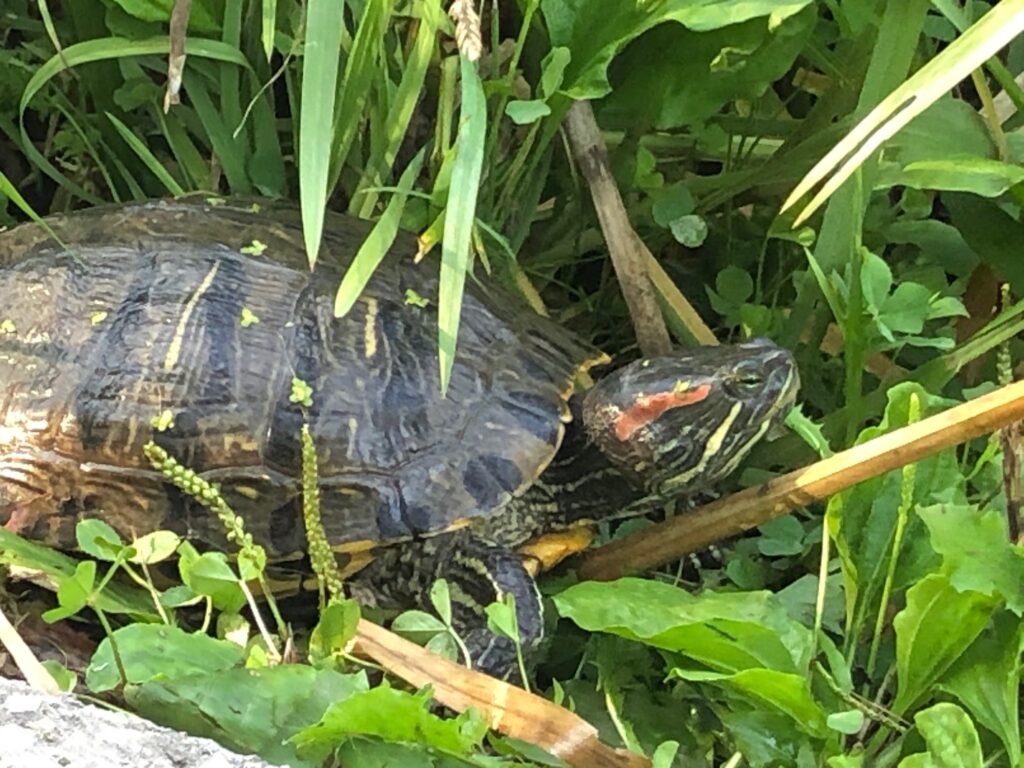
This turtle could find no peace basking in the morning sun. Unfortunately positioned between a small swamp and a main path through Taylor Creek Park, it attracted attention from people walking by.
I was delighted to see it in the grasses. At first I thought it was a Painted Turtle. Unfortunately, my delight was tempered a bit when I realized it is a Red-eared Slider.
Still a wonderful and beautiful animal. But Red-eared Sliders are an invasive species of turtle likely the result of someone irresponsibly releasing a pet into the wild. And all eight of Ontario’s native turtles are now endangered, threatened, or classified as of concern.
Southern Ontario has the most kinds of turtles anywhere in Canada. There’s the Spotted Turtle with its yellow spots and fiery red-orange-yellow patterns on its face and legs; the Blandings Turtle with its yellow neck and underbelly; the Eastern Spiny Softshell which looks a bit like a green pancake with a head and legs; the Wood Turtle with orange legs; the very small Eastern Musk Turtle (also called the Stinkpot) with mostly mud coloured body and shell with just a little bit of yellow colouring on its head, the Northern Map turtle with gorgeous yellow and greenish brown patterns on its shell and body; the powerful and larger Snapping turtle; and the beautiful Painted Turtle with red spots around the edge of its carapace (shell) and on its neck and legs. There are actually three subspecies of painted turtle in Canada, two of which live in Ontario, the Midland Painted Turtle and the Western Painted Turtle.
“The Red-eared Slider is the most common non-native species of turtle found in Ontario,” Ontario Nature says, “This species was introduced through the pet trade and is now found in every continent except Antarctica. It has a brown to black upper shell, yellow stripes on its limbs and head, and a distinctive red or orange band around the eyes. Native to the U.S., the Red-eared Slider is commonly sold in pet stores, but many people who buy one do not realize that it can reach a maximum size of 25 to 33 centimetres and live for more than 30 years in captivity.”
The Ontario Turtle Conservation Centre says that “Red-eared Sliders, and other species that are not native to Ontario, are increasingly being found in our wetlands and waterways. These animals do not belong in the wild – they are pets that have been released by people no longer able or willing to care for them. Not only is this not humane for the animal, these exotic species may compete with native turtles for food and other resources.”
Back to the beautiful turtle in the park. Even if s/he shouldn’t be there. Basking is actually really important to turtles, since they can’t regulate their body temperature and they can’t eat if they get too cold. So it was too bad that this turtle was being made uncomfortable by humans as s/he tried to bask in the morning sun.
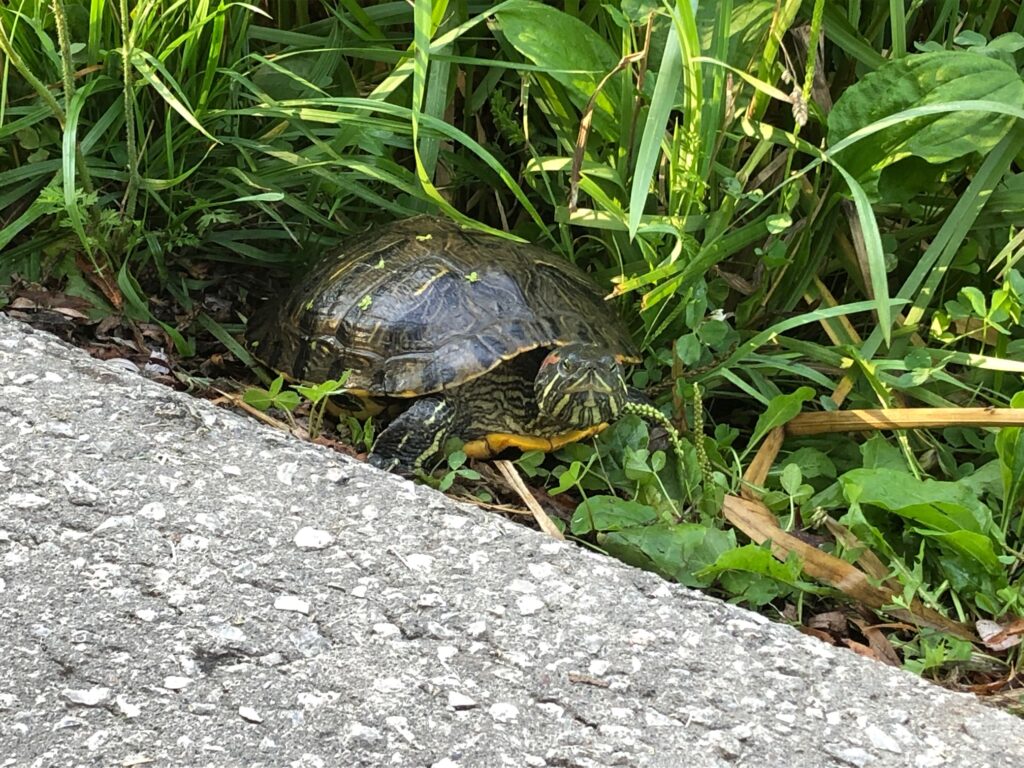
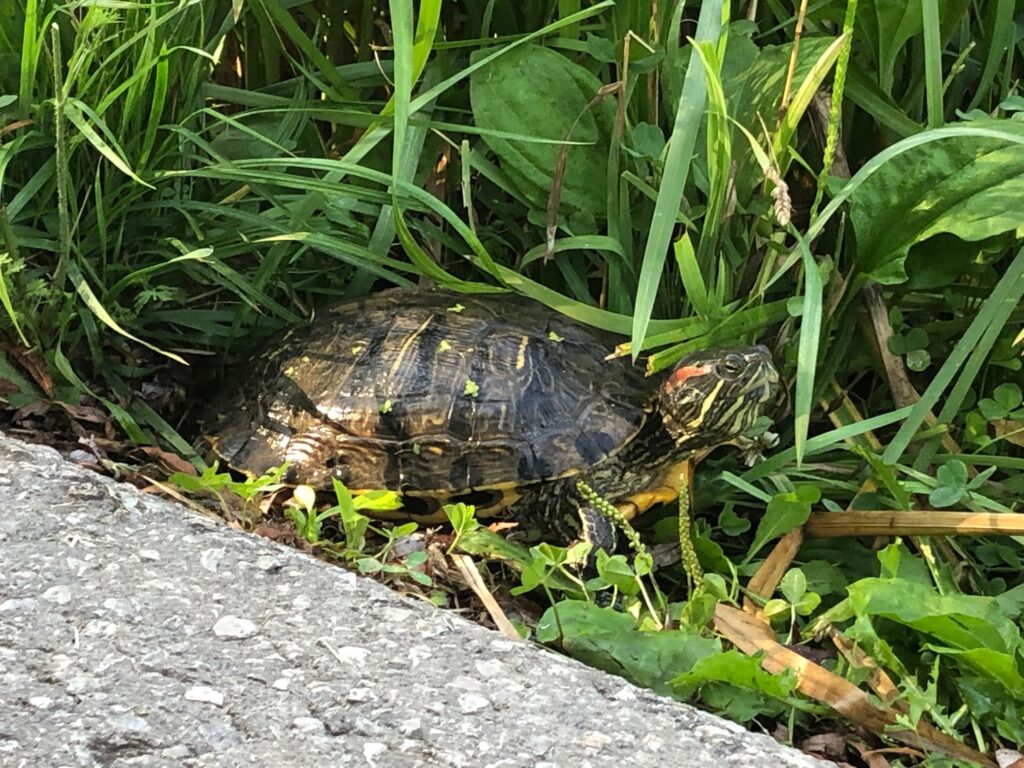
Turtles have a long history of being associated with wisdom, longevity, and the creation of the world.
Some of these stories are summarized on Wikipedia:
“According to Iroquois oral tradition, “Sky Woman fell down to the earth when it was covered with water, or more specifically, when there was a “great cloud sea”. Various animals tried to swim to the bottom of the ocean to bring back dirt to create land. Muskrat succeeded in gathering dirt, which was placed on the back of a turtle. This dirt began to multiply and also caused the turtle to grow bigger. The turtle continued to grow bigger and bigger and the dirt continued to multiply until it became a huge expanse of land. Thus, when Iroquois cultures refer to the earth, they often call it Turtle Island.”
“In Cheyenne tradition, the great creator spirit Maheo kneads some mud he takes from a coot’s beak until it expands so much that only Old Grandmother Turtle can support it on her back.
In Mohawk tradition, the trembling or shaking of the Earth is thought of as a sign that the World Turtle is stretching beneath the great weight that she carries.”
“In Hindu mythology the world is thought to rest on the backs of four elephants who stand on the shell of a turtle.”
In Chinese tradition, the turtle is sacred and symbolizes longevity, power, and tenacity. In Chinese stories, the turtle helped Pangu create the world by holding up the sky with turtle’s legs.
There are many more instances of turtles in cultures around the world. Wikipedia’s Cultural Depictions of Turtles in various countries and cultures can be read here.
The Ontario Turtle Conservation Centre can be found online here.
You can visit Ontario Nature, the conservation organization, here.
If you are interested in adopting a rescue turtle as a pet, check out Little ResQ.
Couple out for a morning walk together
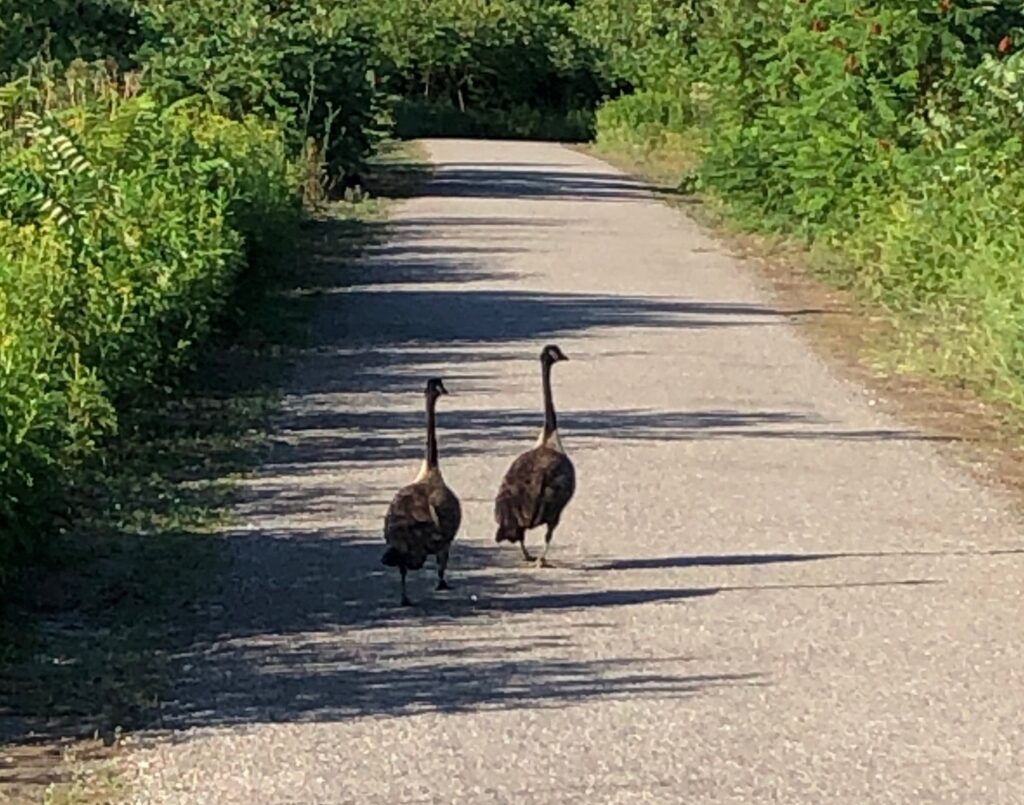
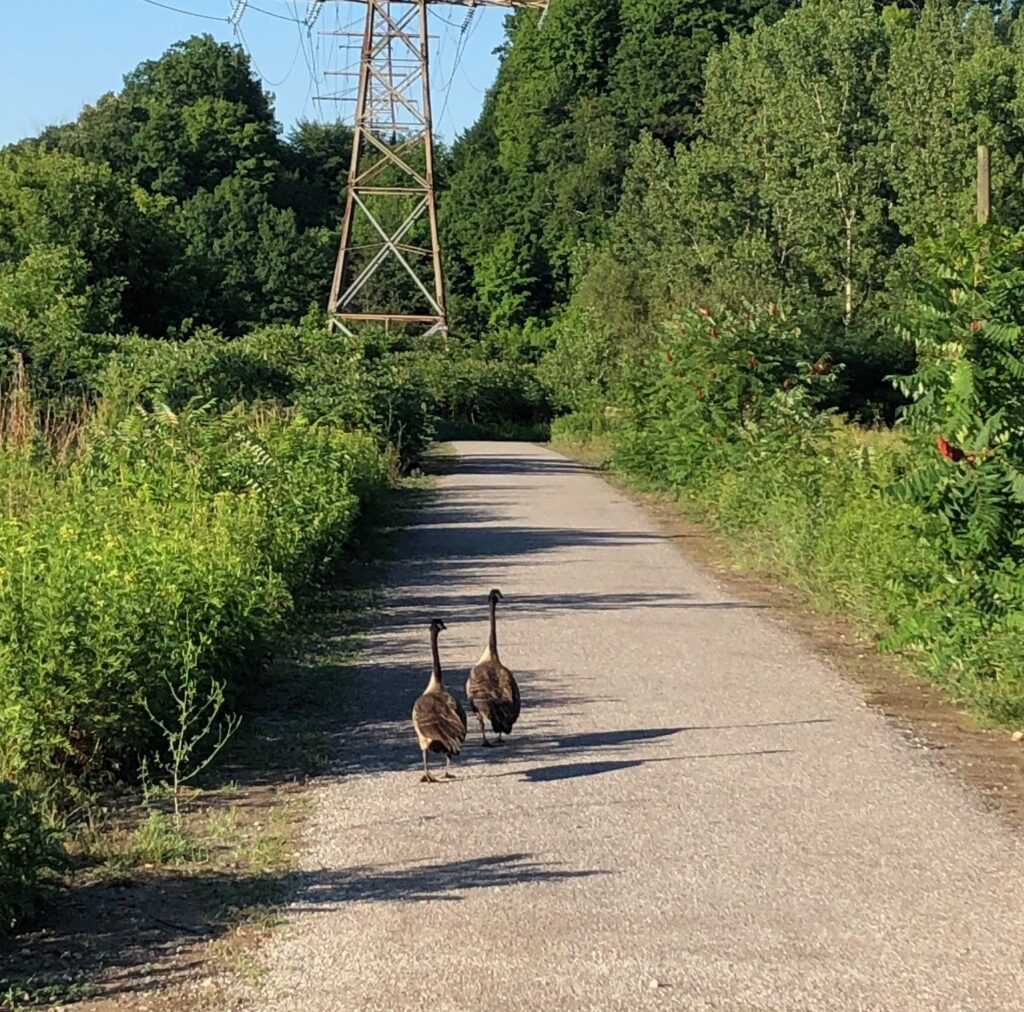
Today’s small joy: coming out of a fab hike through Crothers Woods and seeing this couple out for a morning walk together on the Sun Valley trail.
Hearing the Chorus for the First Time

This morning I shared this on my personal social media accounts:
Today’s small joy: hearing the chorus for the first time. They sound like wet wide rubber bands. Toads? (Anyone know?)
Before settling in for a day of work and meetings, I went for a walk in Taylor Creek Park, and I took a moment to go off the path and explore what might be just over a small hill.
It turned out to be a swampy area that was full of music! And loud!
I had never heard them before and I had no idea who was singing. Frogs? Toads?
Al Lerman, a “blues/roots musician who has been playing with sizzle and soul since the 70s” and great guy who I was on the Board of Directors of the Toronto Blues Society with years ago, responded to my post with this awesome message:
“Wood frogs or possibly green frog. You can hear both their calls here: https://www.naturewatch.ca/frogwatch/ontario”
What a fantastic resource! There are photos and recordings of all different kinds of toads and frogs.
There are so many great names of Ontario frogs and toads: Spring Peeper, Striped Chorus Frog, Boreal Chorus Frog, frogs with other animals in their names (which kind of cracks me up), like the Leopard Frog, Pickerel Frog, Blanchard’s Cricket Frog, and Mink Frog (wait, don’t mink eat frogs?), and of course the well-known Bullfrog.
Thanks to Al and the Frog Watch website, I was able to easily figure out that it was definitely a choir of Green Frogs I heard singing this morning. Certainly not toads!
Here’s the photo of a Green Frog that I took in the park after posting this story:
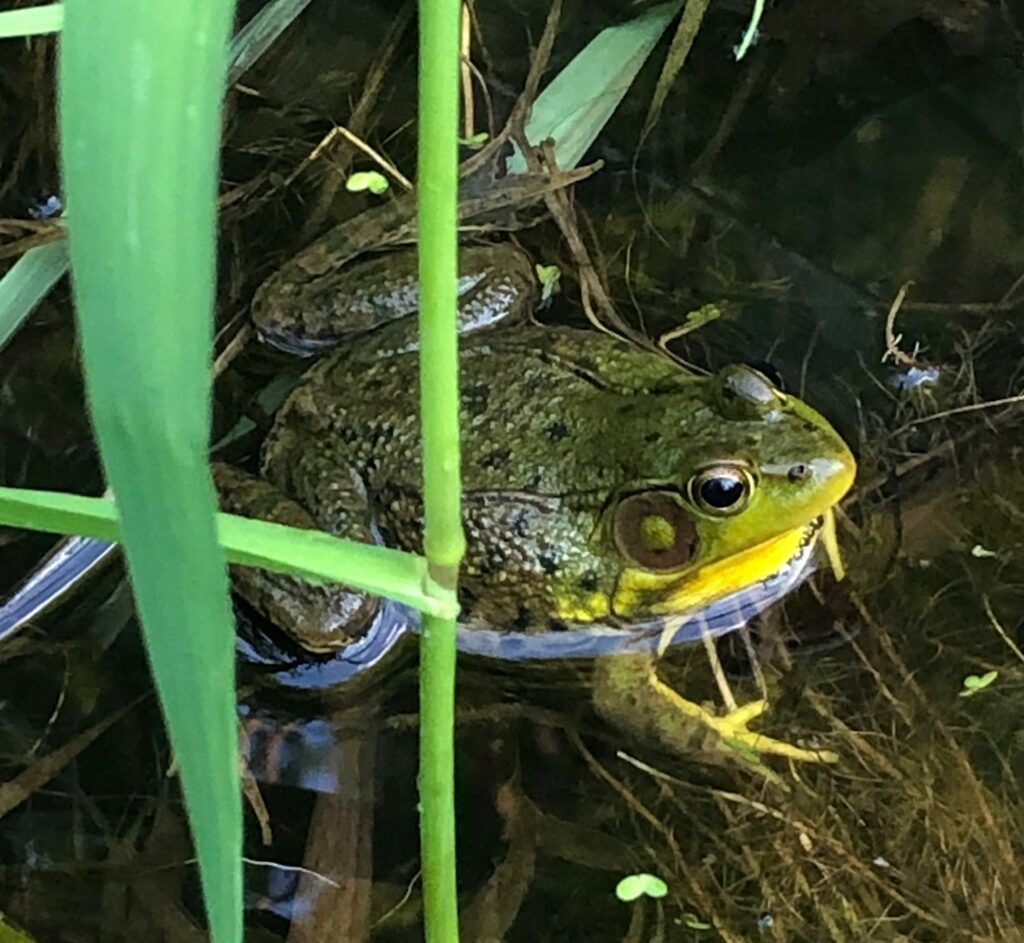
Such a cutie! 🐸
